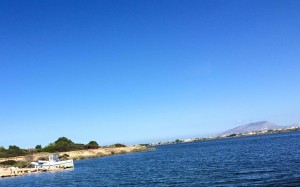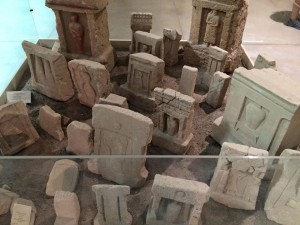Hey guys! I have to say, I’m getting to the last few posts about Sicily and I’m a tiny bit sad. At least we’ll be ending with some gems. This place surrounded by crystal-blue water is the beautiful island of Motya. Here, you’ll find some archaeological remains and a small museum including other parts of Carthaginian culture that have been preserved from the port of Lilybaeum, established in 397 BC (Holloway 155).

Of course, not all the remains found fit with this lovely, picturesque atmosphere above.
What were these rather un-picturesque remains?
Well….

Tombstones, which many scholars believe belonged to children who were sacrificed on the island are featured in the Motya museum :(. Of course, since the Romans were the sworn enemies of the Carthaginians, there are some scholars that believe this was all Roman propaganda. However, the archaeologist Whitaker is thought to have found a Carthaginian altar, called a tophet, where some kind of human sacrifice took place on the island, with evidence that it continued into the second century. (Holloway 155).
A much less depressing part of the museum is the Motyan Youth, put on proud display at the front of the small building. The statue itself was only recently discovered in ’79 and consequently, still has many scholars clamoring over it. The uniqueness of its stance and its almost seductive, yet strong and some might say masculine figure perplexes many. In addition, it is likely that it was sculpted in the fifth century BC, although there is contention among writers in this also. Scholars such as Bell agree that the youth is a charioteer, due to its dress.
Whatever may be the case, it is beautifully positioned in the museum, and certainly helps visitors to take their minds off the tophet tombstones.

Works Cited: